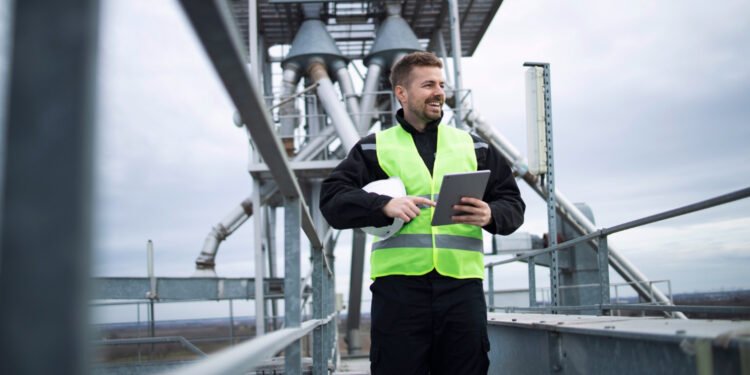If you’re responsible for maintaining pressure vessels in your facility, then you know how critical it is to ensure their safety and reliability. API 510 Pressure Vessel Inspections are a key component of that effort. These inspections help identify potential problems before they become major issues, ensuring that your equipment remains in compliance with industry standards and regulations.
To conduct effective API 510 inspections, there are several key considerations to keep in mind. Proper planning and preparation are crucial, as is thorough data collection and analysis. Certification and accreditation are also important factors to consider when selecting an inspection provider.
In this article, we’ll explore each of these areas in more detail, providing practical tips and recommendations for successful API 510 inspections. Whether you’re new to the process or looking to improve your existing approach, this article will provide valuable insights to help you achieve the best possible outcomes for your pressure vessel inspections.
Key Takeaways
– Proper planning and preparation are crucial for effective API 510 pressure vessel inspections
– Thorough and accurate data collection and analysis are essential for identifying potential issues or defects
– Third-party certification and accreditation ensure compliance with industry standards and best practices
– Ongoing training opportunities can improve the effectiveness of inspections.
Importance and Purpose of API 510 Pressure Vessel Inspections
You’re probably wondering, “Why should I care about API 510 pressure vessel inspections?” Well, let me tell you – these inspections are crucial for ensuring the safety and reliability of your equipment.
By conducting regular API 510 pressure vessel inspections, you can detect any damage or deterioration early on and address it before it becomes a major issue. This not only helps to prevent costly repairs but also minimizes the risk of accidents and downtime.
One of the benefits of API 510 pressure vessel inspections is that they help to identify potential problems before they cause serious damage or failure. However, there are some limitations to these inspections as well.
Common inspection techniques include visual examination, ultrasonic testing, radiography, and magnetic particle inspection. To ensure that these methods are effective in detecting any issues with your equipment, proper planning and preparation must be done beforehand.
Proper Planning and Preparation
Before conducting API 510 pressure vessel inspections, it’s crucial to properly plan and prepare. This includes:
– Understanding industry standards and regulations
– Identifying critical components and areas
– Establishing a detailed inspection plan
By following these key points, you can ensure that your inspections are effective in maintaining the safety and reliability of your pressure vessels.
Understanding Industry Standards and Regulations
As an inspector, it’s important to understand the industry standards and regulations that govern pressure vessel inspections. The interpretation of these guidelines can present challenges, especially when it comes to determining regulatory compliance. However, understanding these regulations is critical for ensuring that you conduct effective inspections.
Here are some key points to keep in mind when considering industry standards and regulations:
– Familiarize yourself with the ASME Boiler and Pressure Vessel Code.
– Understand the specific requirements for each type of pressure vessel being inspected.
– Stay up-to-date with any changes or updates to industry regulations.
– Be aware of any state-specific requirements or variations from federal regulations.
– Consult with other experts or regulatory bodies if you have questions about compliance.
By understanding the various regulatory requirements governing pressure vessel inspections, you’ll be able to effectively identify critical components and areas that require special attention during your inspection process.
Identifying Critical Components and Areas
When identifying critical areas and components during inspections, it’s crucial to have a thorough understanding of industry regulations and guidelines. This knowledge will help you determine which components require the most attention during an inspection.
Critical components may include pressure vessels, piping systems, valves, and instrumentation. To properly identify these critical components, inspectors must use various inspection techniques such as visual inspection, non-destructive testing (NDT), and thickness measurement.
Visual inspection involves examining the surface of the component for signs of damage or corrosion while NDT techniques like ultrasonic testing can help detect flaws that aren’t visible to the naked eye. Thickness measurement is also important as it allows inspectors to determine whether a component has experienced thinning due to corrosion or other factors.
By using these techniques in combination with their knowledge of industry standards and regulations, inspectors can accurately identify critical components that require further examination and ensure the safety of personnel working with pressure vessels.
With a comprehensive understanding of critical components and inspection techniques in hand, next comes thorough and accurate data collection and analysis…
Thorough and Accurate Data Collection and Analysis
Make sure you’re collecting and analyzing data thoroughly and accurately for effective API 510 pressure vessel inspections. Data interpretation is a crucial aspect of the inspection methodology, as it helps identify potential damage or defects in critical components and areas.
To ensure thorough and accurate data collection, consider the following tips:
– Use appropriate equipment to gather reliable information.
– Follow established procedures for data analysis to avoid errors or inconsistencies.
– Record all relevant data from the inspection process to create a comprehensive report.
By taking these steps, you can maximize the effectiveness of your API 510 pressure vessel inspections by providing accurate assessments of potential risks and necessary repairs. This information is critical not only for maintaining compliance with regulatory requirements but also for ensuring the safety of personnel working with these vessels.
It’s important to note that thorough data collection and analysis are essential components of successful inspections. By adhering to strict standards for certification and accreditation, you can demonstrate your commitment to excellence in this field while providing valuable services to clients seeking reliable evaluations of their pressure vessels.
Certification and Accreditation
As you plan for your upcoming inspections, it’s important to consider the importance of third-party certification. This can provide an objective assessment of the competence and impartiality of the inspection provider.
Additionally, accreditation requirements and standards can ensure that the inspection is conducted in accordance with recognized industry best practices.
Importance of Third-Party Certification
You can’t underestimate the importance of third-party certification in ensuring the safety and reliability of your pressure vessel.
While it may seem like an additional expense, the benefits far outweigh any drawbacks.
Third-party certification provides an objective assessment of your pressure vessel’s compliance with industry standards and regulations.
Certification from a reputable third-party organization gives you and your customers confidence in the quality and safety of your pressure vessel.
This can lead to increased business opportunities, as customers are more likely to choose a certified vendor over a non-certified one.
In addition, third-party certification helps identify potential issues early on, allowing for timely repairs or replacements before any accidents or failures occur.
As we move forward into the next section about accreditation requirements and standards, remember that accreditation is closely tied to third-party certification and plays a crucial role in maintaining industry-wide standards.
Accreditation Requirements and Standards
Now that you understand the importance of third-party certification, let’s dive into the accreditation process and eligibility criteria for inspectors.
Accreditation is the process of certifying an individual or organization as meeting specific standards or requirements. For api 510 inspections, there are several organizations that provide accreditation, including ASME and the National Board.
To become accredited, inspectors must meet certain eligibility criteria such as education and experience requirements, passing a written examination, and completing a minimum number of successful inspections. Additionally, accredited individuals must maintain their certification through continuing education and re-examination processes.
Understanding the accreditation requirements and standards is crucial for ensuring effective api 510 pressure vessel inspections. By selecting an accredited inspector or inspection organization, you can have confidence in their knowledge and expertise in conducting these critical safety assessments.
So now that we’ve covered this important topic, let’s move on to practical tips and recommendations for successful api 510 inspections.
Practical Tips and Recommendations for Successful API 510 Inspections
Get ready for some practical tips and recommendations to help you succeed in your API 510 inspections.
One important aspect of conducting effective inspections is having a thorough inspection checklist. This will ensure that all necessary items are inspected and no critical areas are missed. Make sure to review the checklist before beginning the inspection and take note of any specific items or areas that require extra attention.
Another key factor in successful API 510 inspections is proper inspector training. It’s important to have an experienced and knowledgeable inspector who has received adequate training on API 510 standards and regulations. This will ensure that they can accurately identify any potential issues or defects in the pressure vessel, which is crucial for maintaining safety and preventing equipment failure.
Additionally, providing ongoing training opportunities for inspectors can help them stay up-to-date with new technologies, best practices, and industry developments, leading to more effective inspections overall.
Conclusion
Congratulations! You’ve successfully completed the API 510 pressure vessel inspections, and now it’s time to wrap up your inspection project.
Your dedication and hard work have paid off, and the results of your inspection will help ensure the safety and reliability of these critical assets for years to come.
As you conclude your inspection project, it’s essential to review your notes and documentation thoroughly. Ensure that everything is complete and accurate, including any corrective actions or recommendations that you made during the inspection.
Make sure that all stakeholders involved in the inspection process have access to this information so that they can address any issues promptly.
Remember that API 510 inspections are an integral part of ensuring safe operations in the oil and gas industry. By following best practices for proper planning, thorough data collection, certification, accreditation, and practical tips for successful inspections, you can help maintain high standards of safety in your workplace while maximizing operational efficiency.
Thank you for your hard work on this important task!
Also Read Interesting Articles At: Ebeak.


















